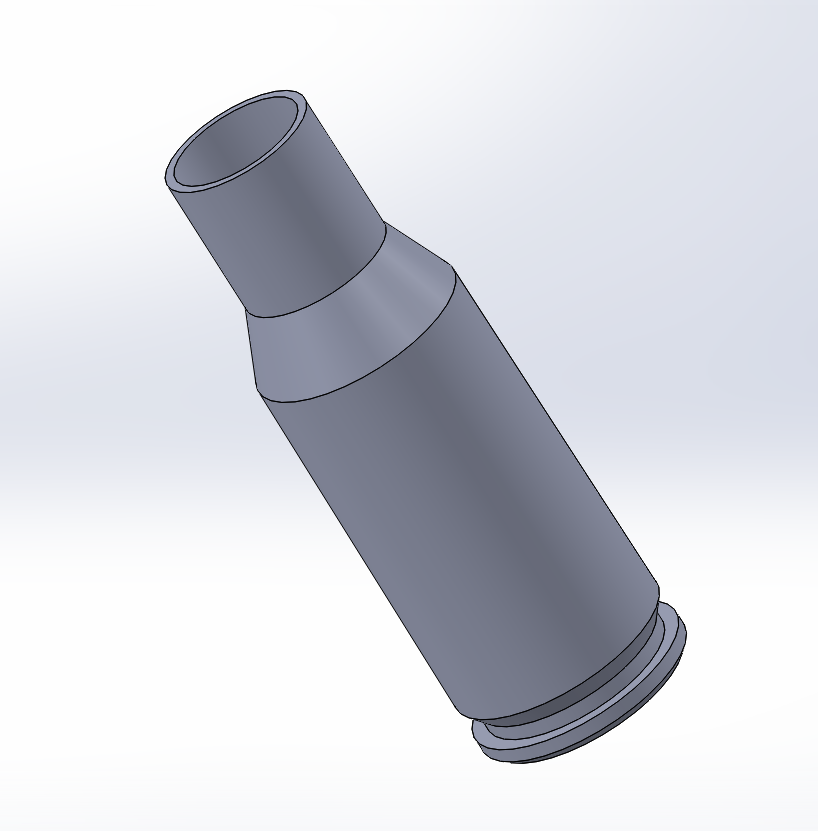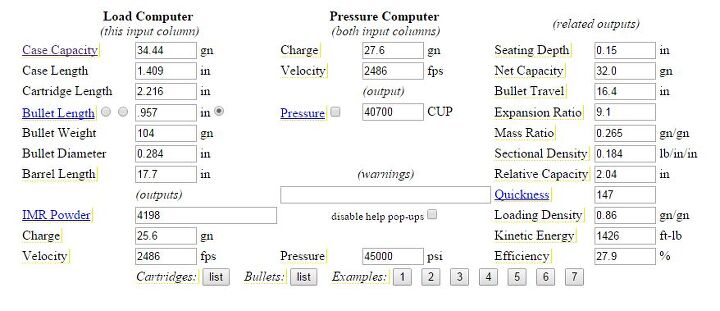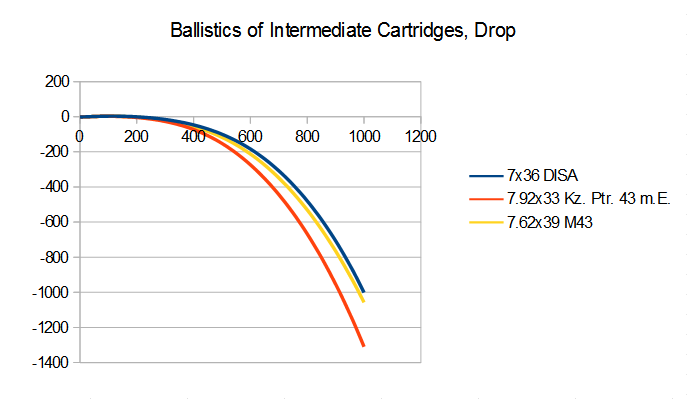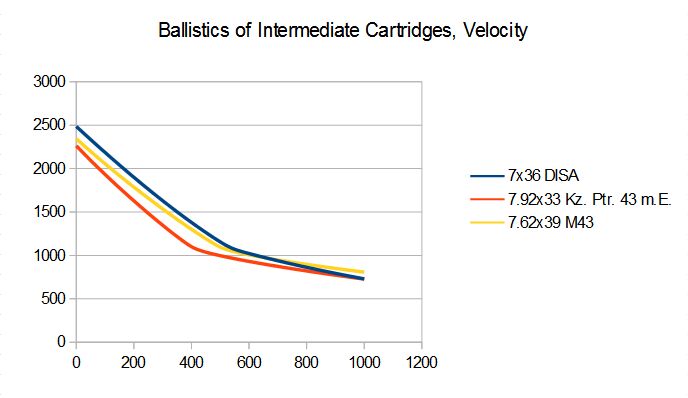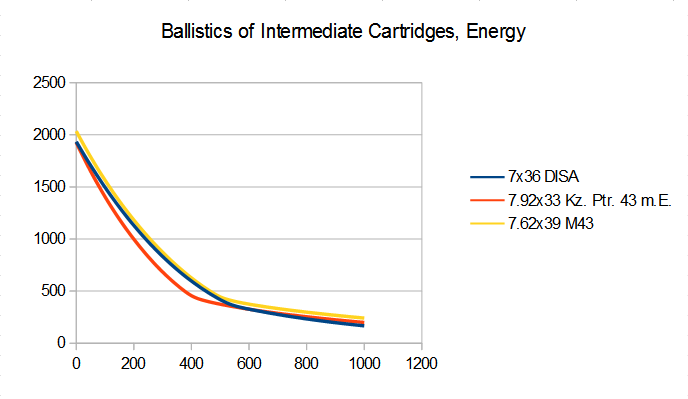When researching historical weapons and ammunition, it is sometimes helpful to know what sort of ballistics a round produces. However unfortunately not every cartridge in history comes to the historian complete with a set of period ballistics tables, and in some cases even when they do those tables are wrong due to the primitive ballistic models in use at the time. Therefore, it’s helpful to be able to develop ballistic models for cartridges where there exist none, and that’s where the Danes come in.
In the early 1960s, the DISA (better known as Madsen) company of Denmark had developed an intermediate caliber assault rifle, the DISA Karabin, chambered for a 7mm short cartridge. Little is known about the rifle itself, but the 7x36mm DISA is a perfect case study for us because of what we do know about it: It was loaded with a 6.75 g (104.2 gr) S Patrone-style bullet over 1.6 g (24.7 gr) of IMR 4198 powder or equivalent, and it was formed from .30-06 cases. Because the cases were actually formed from .30-06 brass, we can get a very accurate internal volume estimate, and with the bullet weight, shape, and charge weight, we’ll have enough data to produce a reasonably accurate velocity figure using a Powley computer.
Using this .30-06 factory case drawing as a starting point, and the 7×36 DISA drawing at Municion.org, I was able to model in SolidWorks the 7×36 DISA case, or something closely approximating it. This model gave me an estimated case capacity for the 7×36 of 2.23 ccs or 34.4 grains H2O. Below is the case as I rendered it:
I estimated the length of the bullet as 24.3 mm from this drawing. I was unable to get a solid figure for the DISA Karabin’s barrel length, but based on this image I made a guess of 450mm.
I grabbed the cartridge dimensions from the cartridge’s Municion.org page, converted them to English units, and plugged them and all the other necessary figures into the online Powley computer:
The computer has some limitations; one of them being that the user is unable to “dial-a-charge”. So it gives me a charge of 25.6 grains (1.66 grams) and a velocity of 2,486 ft/s (758 m/s). Dialing the Pressure Computer up around those figures gives us a pressure estimate of about 45,000 PSI (310 MPa).
The shape of the bullet is fairly well-characterized. It is very close to the old S Patrone shape that has been in use in ages. Another such bullet, the .30 Caliber M2 Ball projectile, has a BC of .210 G8, and an i8 form factor of 1.086. So I can estimate the G8 BC of the 7×36’s projectile as being .170. This allows me to make ballistics tables for it via the same methods used this post on the 6.8 SPC, and compare it to other cartridges of the period:
Whether these figures are correct or not is uncertain. However, they are unlikely to be very different than actuality, and it’s clear that the 7x36mm DISA compares well against the 7.62×39 and 7.92×33 at ranges below 500m. After that point, the projectile’s flat base really starts dragging it down.
These data aren’t necessarily accurate to the original round, but barring actually shooting an original DISA Karabin and measuring the velocity with Doppler radar, they’ll have to do!
 Your Privacy Choices
Your Privacy Choices

